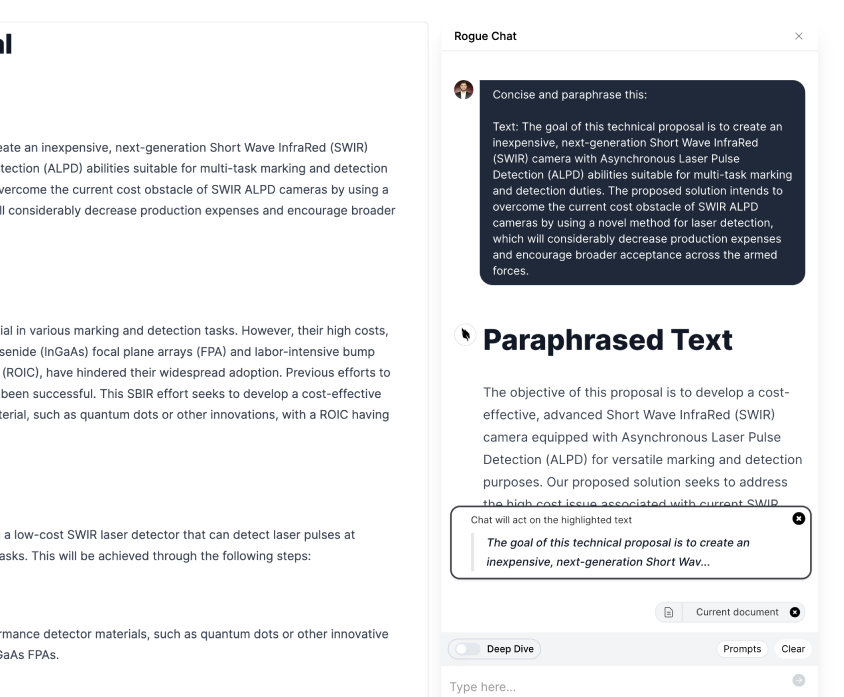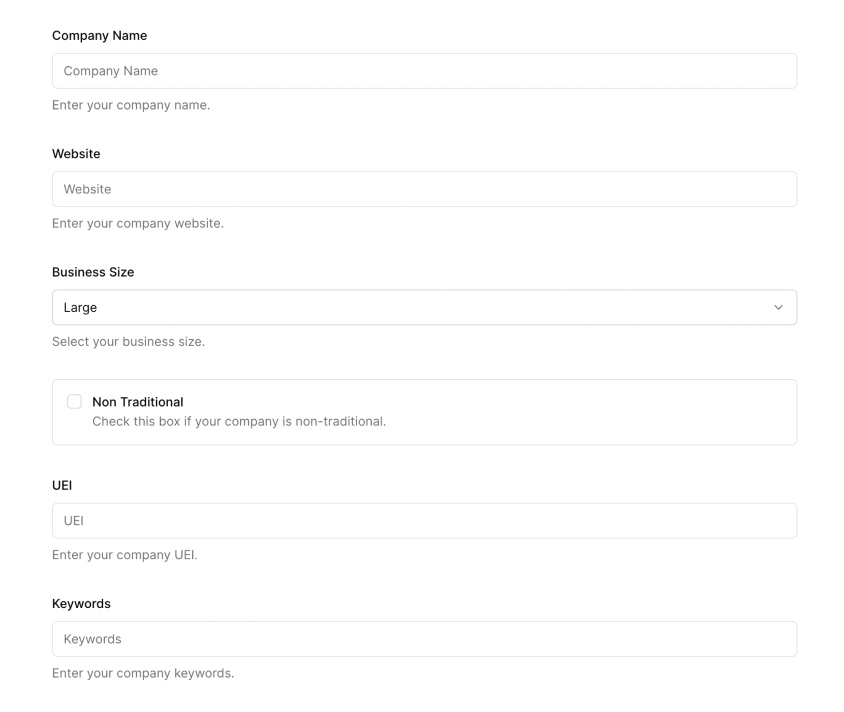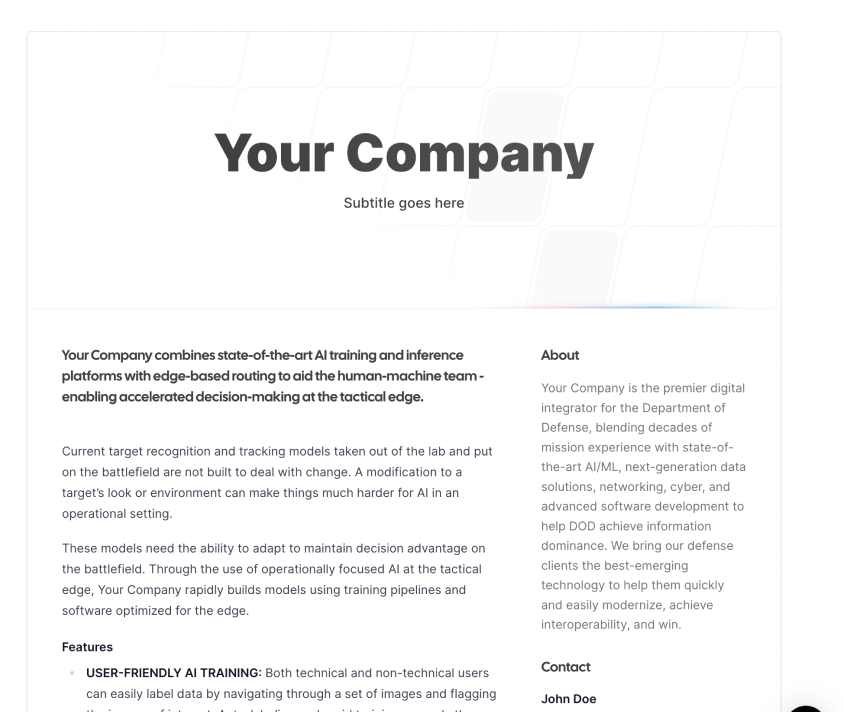
Module 5.0: How to Use GPT for Government Contract Proposal Tasks
Intro
This post is a “post of posts”, mainly just a reference to the more meaty post that come after. But the search engine optimization being what it is, I would rather cram all the best search terms in here and then have folks find real value in the subsequent posts, rather than the other way around.
Applying GPTs in GOVCON Proposal Tasks
Government contracting, or GOVCON, involves a plethora of tasks that can be quite daunting for many professionals. These tasks range from Request for Proposal (RFP) summarization to creating a company capability statement and responding to a Request for Information (RFI). Generative Pretrained Transformers (GPTs), powered by artificial intelligence, can be invaluable tools in managing these tasks. These technologies greatly ease the process of proposal development, leading to enhanced productivity.
Using GPT to write a Company Capability Statement
A company capability statement is a document that showcases the competencies and achievements of a company. It often plays a pivotal role in winning government contracts. GPTs can help create effective capability statements by generating succinct and compelling content that highlights the company's strengths and uniqueness. With AI you can write unlimited custom tailored capabilities statements, targeted at he customer or industry partner to whom you plan to send it.
RFP Summarization
An RFP is an intricate document that outlines what a government entity is seeking from potential service providers. Summarizing an RFP can help you sort wheat from chaff, rather than cracking the documents open and searching through the sections C, L, and M to figure out if it is even worth your time, you can upload the doc to a GPT and get a decent idea in a few seconds, with the right prompts. GPTs can assist by scanning through the document and highlighting the essential information. They reduce the time spent on manual reading and summarization, enabling the team to focus on creating compelling responses.
RFI/Source Sought Response
RFI or Source Sought are the first step in the B&P process, they’re low value from a direct revenue perspective, but you basically have to write them if you plan to respond to the RFP that comes after. Like it or not, the RFI/Sources Sought is a standard method used by government agencies to gather information about potential suppliers. Responding accurately to these requests can open doors to lucrative opportunities. GPTs can aid in formulating precise responses by generating relevant content based on the provided input, thereby improving the chances of being shortlisted.
SBIR/STTR Proposals
Small Business Innovation Research (SBIR) and Small Business Technology Transfer (STTR) are a great place to test out the effectiveness of GPTs for proposal writing. They are low page count, low dollar value, and overall low risk. They are also very competitive programs that provide funding for small businesses to engage in federal research and development. Crafting proposals for these programs requires specialized knowledge and skills. GPTs can assist by generating high-quality content that meets the specific requirements of these programs.
OTA Proposals
Other Transaction Authority (OTA) proposals are non-traditional contracts that allow government agencies to carry out certain prototype, research, and production projects. GPTs can facilitate the process of creating OTA proposals by providing well-structured and persuasive content that aligns with the unique requirements of OTA contracts.
Harnessing GPTs for Technical Approach Idea Generation
One of the crucial aspects of proposal development is generating ideas for the technical approach. This involves brainstorming ways to solve the problem at hand using technology. GPTs can provide assistance in this area by generating innovative ideas based on their extensive learning from numerous data sources.
Introduction to Proposal Content Generation
Proposal content generation involves creating content that persuasively presents the solution to the client's problem. It requires a clear understanding of the client's needs and a creative presentation of how those needs will be met. GPTs can aid here by creating engaging and persuasive content tailored to meet specific proposal requirements.
Intro Compliance Matrix
An intro compliance matrix is a tool used in proposal development to ensure that all requirements have been addressed. It maps out all the RFP requirements against where they are addressed in the proposal. GPTs can assist in creating this matrix by automatically identifying and mapping requirements, thereby ensuring comprehensive proposal compliance.
Technical Approach
The technical approach section of a proposal details how you plan to execute the project, including methodologies, tools, and techniques. Here again, GPTs can assist by generating detailed, clear, and convincing approaches based on their wide-ranging knowledge repositories.
Management Approach
The management approach section addresses how the project will be managed effectively to ensure successful delivery. It includes elements like project governance, risk management, quality assurance, etc. GPTs can support in crafting this section by generating well-rounded management strategies that demonstrate your capability to deliver results efficiently.
In conclusion, GPTs hold immense potential in revolutionizing government contracting proposal tasks. By automating various aspects like RFP summarization, capability statement creation, RFI response formulation, and more, they not only make the process more efficient but also enhance proposal quality significantly. Leveraging these AI-powered tools can give businesses an edge in securing lucrative government contracts.
GovCon GPT Masterclass
31 lessons
Sign up for Rogue today!
Get started with Rogue and experience the best proposal writing tool in the industry.



